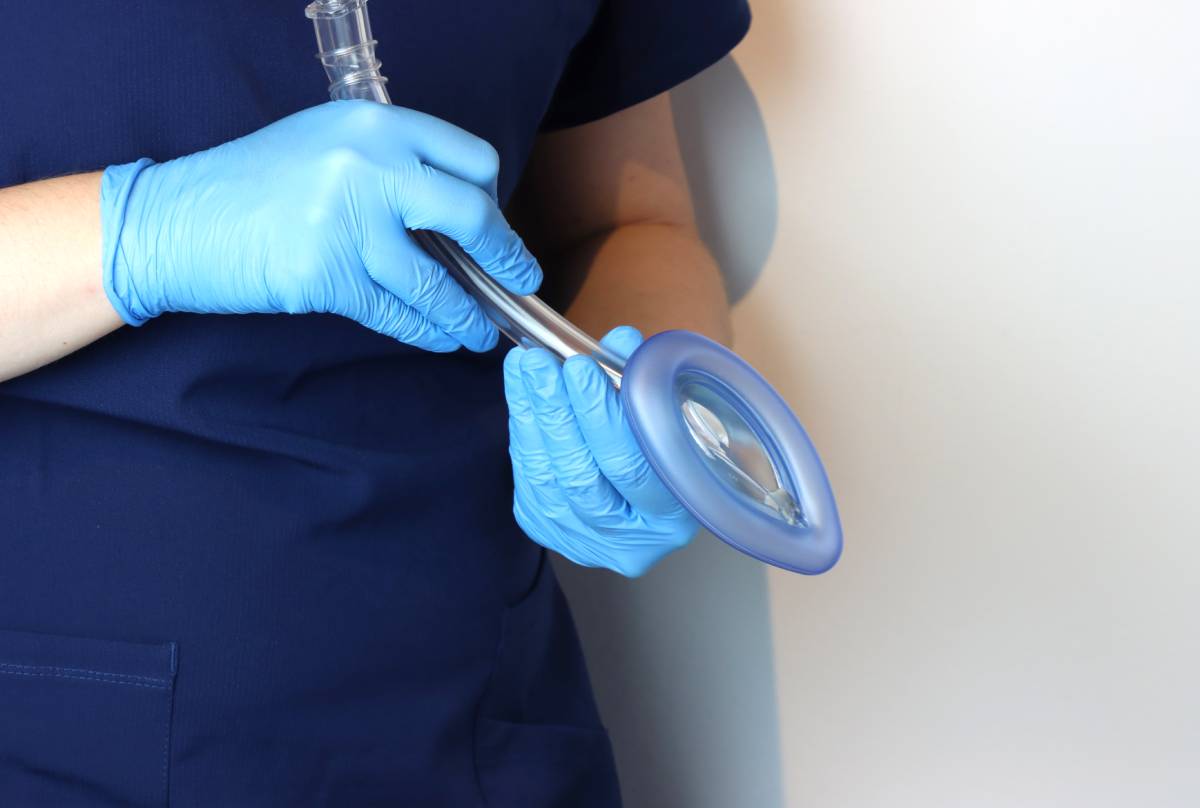In medical settings, ensuring patient oxygenation and ventilation is one of the top priorities. Depending on the clinical situation, patients may breathe on their own, have supplemental oxygen, require an supraglottic airway device, or require endotracheal intubation. A laryngeal mask airway (LMA) is a supraglottic airway device that protects the airway without entering the trachea. Indications for LMA include when the patient’s airway must be actively protected but intubation is not possible or not needed.
LMAs are often used during anesthesia administration or as a life-saving measure in challenging or failed airway situations, as outlined in the difficult airway algorithm endorsed by numerous anesthesiology societies globally. Initially introduced in the 1980s for use in operating rooms, added indications for LMA use have allowed applications in intensive care units, emergency departments, and field settings. LMAs prove more user-friendly and effective than bag valve masks in basic life support scenarios and reduce the risk of gastric inflation. They also serve as an alternative to intubation by advanced life support providers.
LMAs and other supraglottic airway devices play a pivotal role in various medical settings, from prehospital environments to emergency departments and operating rooms. Their ability to facilitate oxygenation and ventilation without entering the trachea makes them invaluable in both primary and rescue airway management. The decision to use an LMA is guided by the necessity for oxygenation and ventilation. In cardiac arrest situations, they can be swiftly inserted without interrupting chest compressions, serving as rescue devices after failed laryngoscopy. LMAs may serve as primary airway management devices in surgical settings for pre-selected, fasted patients, and in emergency situations as a temporary bridge to intubation. LMAs have demonstrated successful use in pediatric patients, adults, and individuals with obesity.
There are various types of devices tailored to specific clinical contexts. Laryngeal masks such as LMA Supreme, King LAD, air-Q, i-gel, Ambu Aura, and CobraPLA offer versatility in airway rescue for children. Classifying these devices into generations aids in understanding their evolution, sharing a common functional principle to enable ventilation without direct tracheal intubation. LMAs create a seal over the laryngeal inlet for short to intermediate periods of oxygenation and ventilation. However, clinicians must be cautious of contra-indications to LMA use, such as airway obstruction, distorted anatomy, and upper airway infections.
Attaining the skills required to use supraglottic airway devices is crucial for emergency care providers. LMAs have demonstrated effectiveness comparable to other airway management strategies in CPR patients and can be appropriately and successfully used in pediatric patients. Blind intubation success rates through an LMA range from 60 to 99%, depending on the device and operator skill. However, LMAs should not be the final secured airway solution in failed airway rescue scenarios, as they can become displaced during transitions between stable and emergency situations.
Despite their efficacy, these devices have potential pitfalls. Clinicians must be aware of challenges such as failure in significant airway obstruction or anatomical distortion, cuff damage, folding, catching on the epiglottis, and incomplete protection against aspiration. While LMAs have low complication rates compared to endotracheal intubation and bag valve masks, potential issues include the distal tip rolling upwards on insertion, requiring techniques to preventcomplications. Forceful insertion may cause pharyngeal tissue abrasion or bleeding, and maintaining an effective seal can be challenging in patients with high airway pressures. Additional risks of LMAs include laryngospasm, nausea, vomiting, aspiration, and coughing. LMAs may not be suitable for conscious or awake patients and have contra-indications based on pulmonary compliance, airway resistance, pharyngeal pathology, aspiration risk, and airway obstruction below the larynx. LMAs may not be the primary airway device in morbidly obese patients due to potential leaks and hypoventilation risks.
References
1. Roblot C, Ferrandière M, Bierlaire D, et al. [Impact of Cormack and Lehane’s grade on Intubating Laryngeal Mask Airway Fastrach using: a study in gynaecological surgery]. Ann Fr Anesth Reanim 2005; 24:487.
2. Pournajafian A, Alimian M, Rokhtabnak F, et al. Success rate of airway devices insertion: laryngeal mask airway versus supraglottic gel device. Anesth Pain Med 2015; 5:e22068.
3. Braude D, Richards M. Rapid Sequence Airway (RSA)–a novel approach to prehospital airway management. Prehosp Emerg Care 2007; 11:250.
4. Wang HE, Schmicker RH, Daya MR, et al. Effect of a Strategy of Initial Laryngeal Tube Insertion vs Endotracheal Intubation on 72-Hour Survival in Adults With Out-of-Hospital Cardiac Arrest: A Randomized Clinical Trial. JAMA 2018; 320:769.
5. Benger JR, Kirby K, Black S, et al. Effect of a Strategy of a Supraglottic Airway Device vs Tracheal Intubation During Out-of-Hospital Cardiac Arrest on Functional Outcome: The AIRWAYS-2 Randomized Clinical Trial. JAMA 2018; 320:779.
6. Roth D, Hafner C, Aufmesser W, et al. Safety and feasibility of the laryngeal tube when used by EMTs during out-of-hospital cardiac arrest. Am J Emerg Med 2015; 33:1050.
